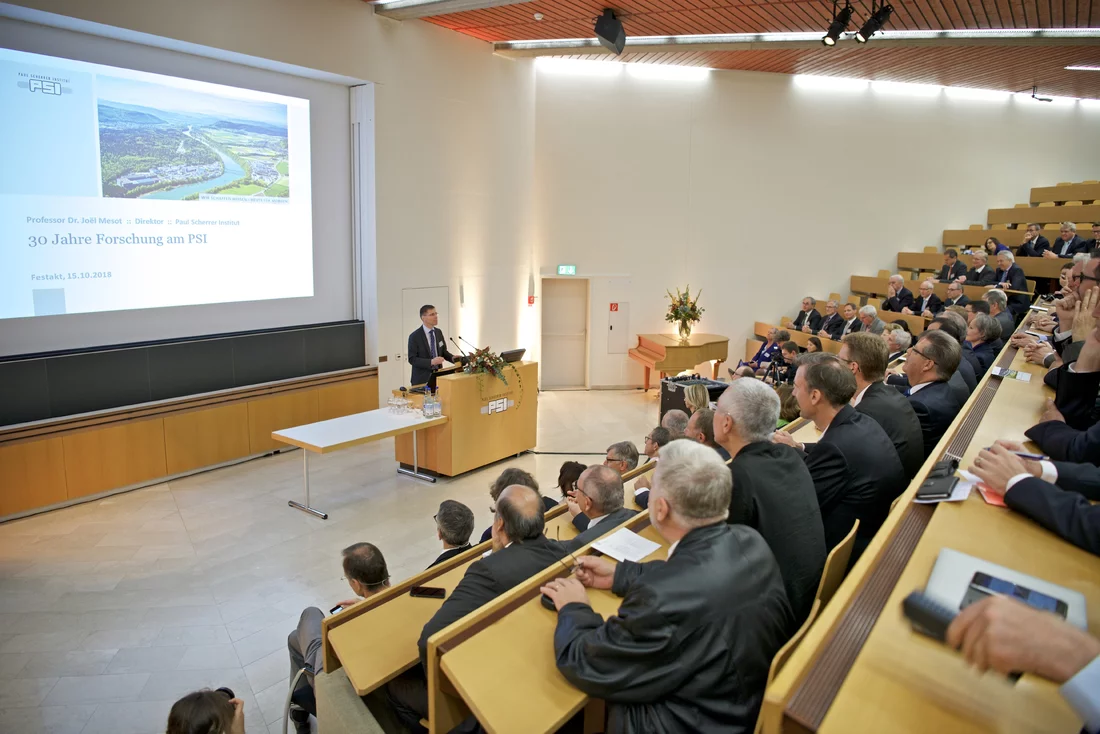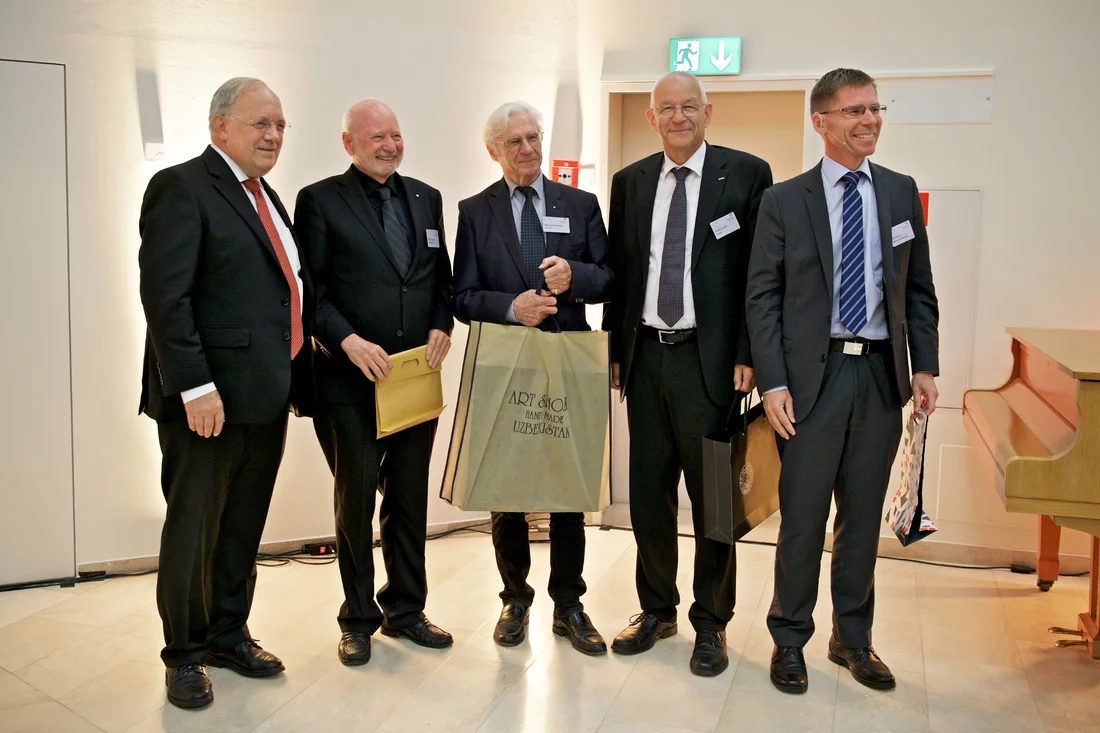Ceremony with invited guests from politics, business and science
The Paul Scherrer Institute PSI has turned 30. Typically, institutes celebrate their 25th anniversary and then only report back at the 50th with a jubilee event. With this event, the Paul Scherrer Institute wanted to give an account to its stakeholders of 30 years of research done with Swiss taxpayers' money. The Institute was able to show its financiers and research partners that the money is invested meaningfully. And that it can show them results that everyone in Switzerland can benefit from today.
The event was moderated by Christine Maier. In his welcome address, Director Joel Mesot emphasised the importance of large research facilities for the work of PSI. In Switzerland, such facilities only exist at PSI. Worldwide however, they faced tough competition, said Mesot. Admittedly there were currently only four facilities similar to PSI’s newest large research facility, the X-ray free-electron laser SwissFEL, and thus the institute was obviously at the cutting edge here. Mesot continued that the situation was however different for synchrotron facilities, of which there were about 50 other across the globe. The global players in this are SLAC@Stanford, Diamond@Oxford, DESY@Hamburg, Soleil@Paris and also SLS@Villigen/Wurenlingen. Mesot went on to point out that now, with the Swiss Light Source SLS, the PSI not only ranked amongst the ten best in the world, but was clearly number one when it came to certain investigation methods; simply because these type of studies could worldwide not be done anywhere else than at PSI.
The next welcoming speech was given by Federal Councillor Johann N. Schneider-Ammann. He shared his recollections of former PSI-Directors, who had all played a part in the institute becoming what it is today, and also expressed the gratitude of the entire Federal Council to the Federal research institute PSI.
Afterwards, the head of the PSI Research Division Biology and Chemistry, Gebhard Schertler, gave his talk about Biological Top Level Research at PSI: From Molecular Fundamentals to Biotechnology and Medical Technology
in which he reported, amongst other things, on the extraordinary success story of cancer treatment with protons at PSI.
Christian Ruegg, Head of the PSI Research Division Research with Neutrons and Muons, gave a presentation about: Matter and Materials: From Individual Atoms to Applications in Leading-Edge Technology
. He spoke about the most recent example of a collaboration between PSI and ABB which had been about improvements in the production of ceramic components.
Next, Andreas Pautz, Head of the PSI Research Division Nuclear Energy and Safety gave his lecture titled Citius, Altius, Fortius: Everything for a Safe and Sustainable Energy Supply
. He highlighted the contributions made by PSI to the safety of Swiss nuclear power plants, to further reduce carbon dioxide emissions as well for the conversion and storage of new renewable energies.
Gabriel Aeppli, Head of the PSI Research Division Photon Science, gave a glimpse into the possible future of PSI in his lecture Looking with PSI Into the Future of Science and Industry
. He addressed the subject of digitisation and elucidated the importance of the issue with the key phrase PSI is shaping the future of digitisation, and digitisation is shaping the future of PSI
.
As a guest from the pharmaceutical industry, Severin Schwan, CEO of Roche, emphasised the importance of the state investing sufficient resources in fundamental research, saying that this was about risks and timescales which the industry could not absorb.
Ursula Renold, President of the Council of the University of Applied Sciences FHNW, gave another guest statement in which she called PSI a strategic partner and reminded everyone about the two institutes‘ joint applications, INKA for nanotechnology plastics and IBRE for biomass and resource efficiency.
Finally, Urs Hofmann, councillor of Canton Aargau, presented PSI to be an Aargau lighthouse with a radiance that reached far beyond the borders of Aargau and Switzerland.
After the ceremony, the guests were taken on a guided tour through the large research facility Swiss Light Source SLS, where they could see the fascinating research for themselves.
Text: Paul Scherrer Institute
About PSI
The Paul Scherrer Institute PSI develops, builds and operates large, complex research facilities and makes them available to the national and international research community. The institute's own key research priorities are in the fields of matter and materials, energy and environment and human health. PSI is committed to the training of future generations. Therefore about one quarter of our staff are post-docs, post-graduates or apprentices. Altogether PSI employs 2100 people, thus being the largest research institute in Switzerland. The annual budget amounts to approximately CHF 390 million. PSI is part of the ETH Domain, with the other members being the two Swiss Federal Institutes of Technology, ETH Zurich and EPFL Lausanne, as well as Eawag (Swiss Federal Institute of Aquatic Science and Technology), Empa (Swiss Federal Laboratories for Materials Science and Technology) and WSL (Swiss Federal Institute for Forest, Snow and Landscape Research).
(Last updated in May 2018)
Contact
Dagmar BarokeHead of Communications
Paul Scherrer Institute, Forschungsstrasse 111, 5232 Villigen PSI, Switzerland
Telephone: +41 56 310 29 16
E-Mail: dagmar.baroke@psi.ch


